Hello, and welcome to Guidance! I think we’re at the point where its safe to say that basically everyone who knows about me and my articles knows that I am a huge fan of Pathfinder’s kitsune race. Seriously, this public knowledge is to the point that for Christmas this year, my brother got me a World of Warcraft plushie that’s basically a fennec fox that’s been infused with shadow energy while mother got me a fox-shaped Christmas ornament.
Seriously, its weird when your family figures out the things you like in your gaming habits. But hey, buying me neat things is WAY better then what, like, a Thanos of the internet does. And yes, I did just use the name of a Marvel villain as a stand in for the words “one-half.” I’m hilarious!
Anyway, game communities tend to not be particularly kind to gamers who like playing non-human character races that aren’t “Tolkien.” Like, virtually no one makes snarky comments about you want to woohoo a dwarf, an elf, or a halfling if you play exclusively those races. But oh man, if you so much as play ONE anthropomorphic animal race (e.g. kitsune / catfolk / ratfolk / etc.) then lots of people immediately sit you down, roll up a television that’s inexplicably on a cart, dust off a ’90s VHS tape, hit the play button, and the first thing you see on the TV screen is:
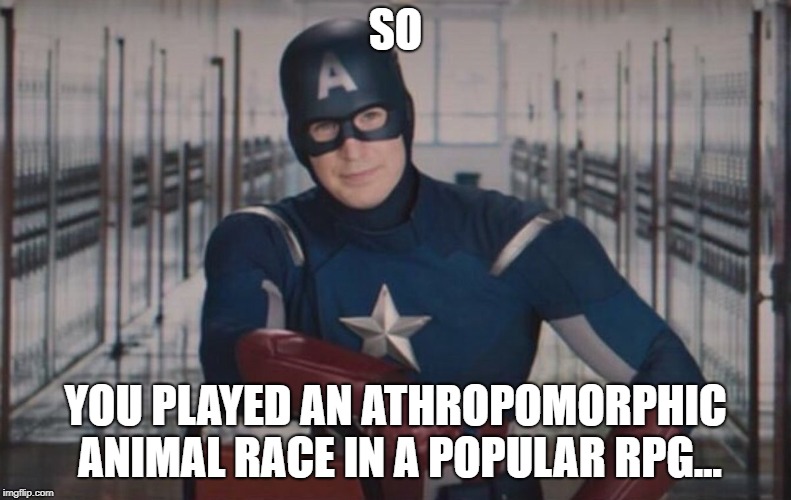
And while the person playing the character might be like, “Oh yeah, I totally did! I like this character,” or “I thought they looked pretty,” or “I really like this animal,” or “I really liked the lore / powers that are associated with this choice,” or “This is my damn game and I can play it however you want,” what most people REALLY mean when they make this observation is:
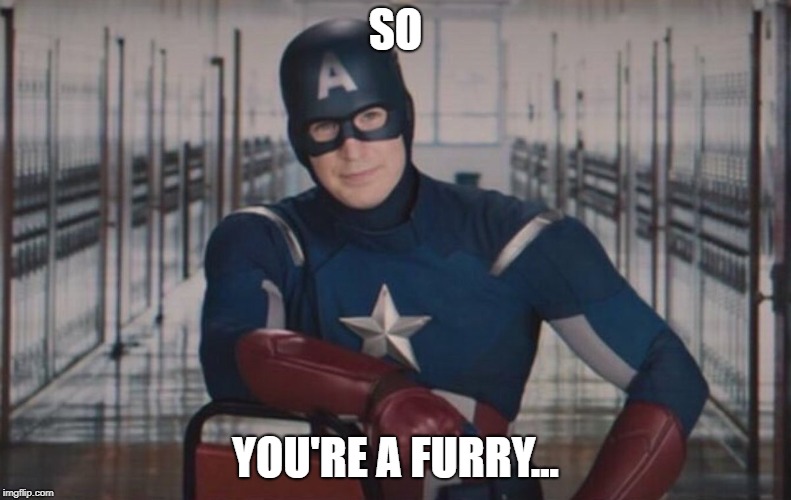
And while I know there are TONS of people in the furry fandom who don’t fit the description that Captain Rodgers is about to say on the next picture, and that they’re all generally great people who are in no way sexually deviant and do great things like supporting artists they like and constructively adding to the body of their fandom’s art and literature, when the vast majority of people say the “You’re a furry” thing to someone, what those people REALLY mean is:

There. I’m pretty sure that I just ruined the “Captain American detention meme” forever. Thanks, internet. YOU MADE ME DO THIS.
But yeah, it is absolutely, 100%, undeniably true. I’ve gotten this both to my face, behind my back at my local PFS, and online at message boards and other sites. (Fun aside—apparently there’s a group of 4Chan people who absolutely despise me for either A] actually being a furry for real and/or B] creating content that they feel empowers and/or legitimizes the fandom. And here I thought I was just playing characters I like while also being a capitalist swine, preying upon the wallets of people who’ll give me their actual money for writing kitsune stuff. Silly me!)
Now, interestingly, this isn’t a problem that people who play any other race have to deal with. Like, imagine if someone came up to you at a convention and was like, “I see you are playing a female human wizard. That must mean that you secretly want to ‘woohoo’ with human men, amirite?” It’s pretty ridiculous, but it’s something that people playing RPGs the way they want to have to put up with all the time. So today, I’m going to take some time to talk about this phenomenon and offer some solutions that’ll help alleviate it from both a player/GM perspective and a designer’s perspective. And to begin that, we need to start with addressing a MAJOR problem in how we play and portray these characters.
Animal Humanoids =/= Actual Animals
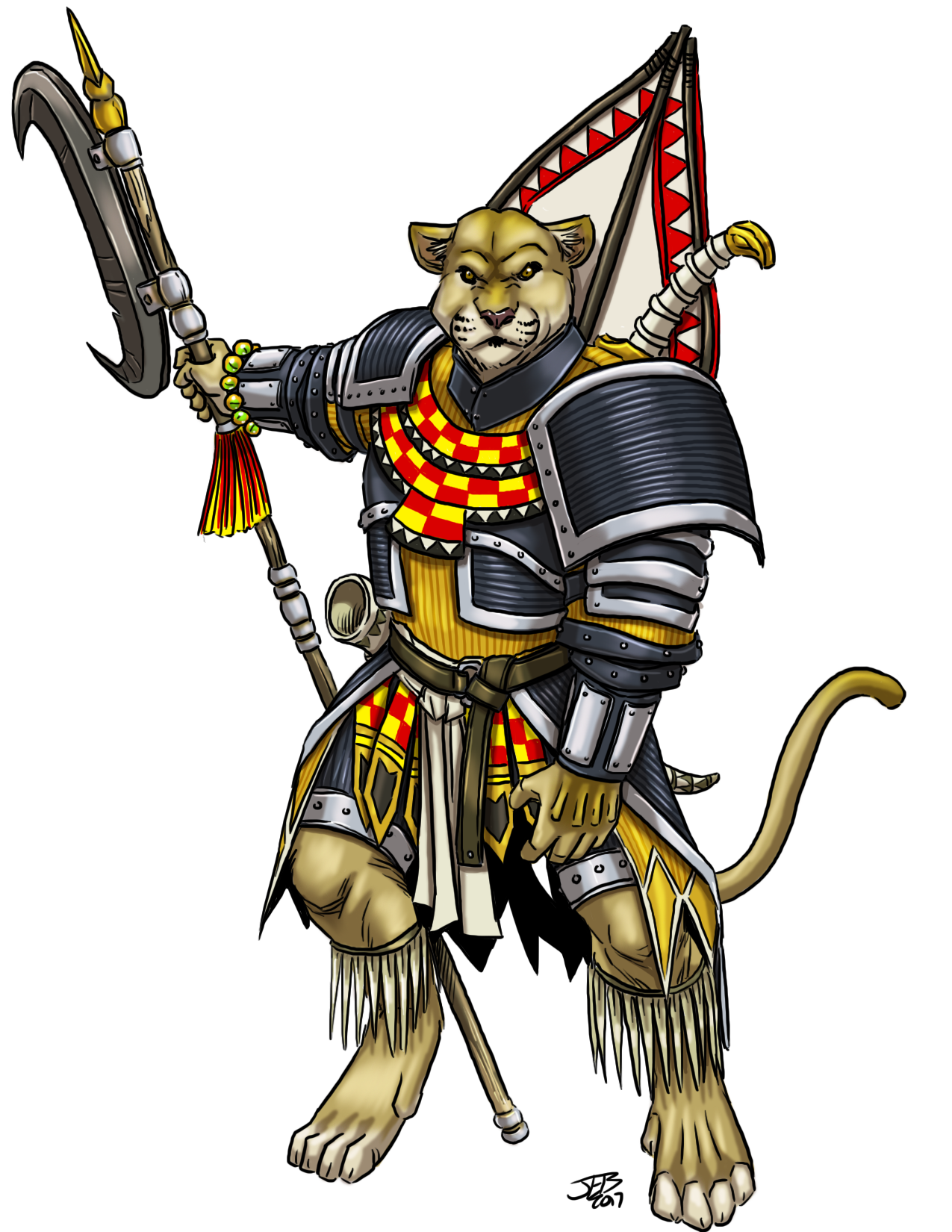
Illustration by Jacob Blackmon. Copyright Everyman Gaming LLC. Note, Zulvr does NOT appreciate being scratched behind his ear without his consent. Don’t try it.
A few weeks ago, I was playing a PFS scenario with my catfolk bloodrager. My buddy traded me his boon for my naiad boon, and I REALLY wanted to play the “prowler at world’s end” archetype I wrote for Blood of the Beast, so I swapped with him and have spent time leveling my catfolk up. Also at this table was a tengu swordmaster rogue, a ratfolk gulch gunner gunslinger, and a kitsune sorcerer. Obviously, we had ALL the animal races. I made a Facebook post about it, and immediately I had a million people post stuff like, “Aw man, that ratfolk better watch out around the catfolk! Cats eat rats!”
Another time, when I was playing this same character, I asked my party to participate in my seance for summoning my cheetah spirit. Basically, I flavor my catfolk as having a plain, golden coat of fur and to channel my spirits, I need to make my fur up with whatever markings the real-world animal I’m trying to channel has. This means stripes for my tiger (champion) spirit, spots for my cheetah (trickster) spirit, neck markings for my lion (champion) spirit, and body paint for my jaguar (guardian) spirit. When I described this to my group members, one of the other players at the table was all like, “I do it… and then scratch you behind the ears.” Zulvr growled at that PC and threaten to take off his arm if he tried anything like that again.
What do both of these stories have in common? In both cases, one or more players / people made an assumption about the player characters at the table based on their physical attributes (aka being animal-like races) that, when you get right down to it, serve to legitimize those races and those individuals. I know it’s sort of weird to use the words “stereotyped” and potentially “racist” when referring to characters that don’t actually exist, but let’s take that same logic and apply it to fantasy humans. If someone at your table said, “Wow, you’re playing a Garundi character? I bet you put lots of ranks in athletic skills and took the Fleet feat,” isn’t that not exceptionally racist? Again, I AM AWARE THAT IT IS NOT PERFECT EQUIVALENCE BETWEEN STEREOTYPING A MEMBER OF A FANTASY SPECIES AND A MEMBER OF A REAL—AKA HUMAN—SPECIES. But the point is that making stereotypical assumptions like that only serve to disenfranchise the player’s choice of character.
And really, when you get right down to people who do this KNOW that they’re doing it. Why? Because when was the last time you saw someone make an assumption like this on a character that was explicitly coded as human? How often do you see players assume that all aasimar are good and righteous, that all tieflings are vile and cruel, that all samsarans are wise or that all skinwalkers like to shift into beast form and beg for belly rubs. It does not happen because those races are coded by designers as humans, not anthropomorphic animals.
Coding Your Species Poorly
So, when I say, “code your species,” what do I mean? In a nutshell, “coding” refers to how you present a character. Obviously a game designer normally doesn’t have the space or mental capacity to tell you every little thing about a given race that you want to know. (I say normally but ….) Instead, we take our time describing generalities of a given race to paint a broad enough picture that a reader has a general idea regarding what a member of that race is like so that it fits in their game world. And for the rest? They rely on reader schema to fill in the gaps until they have the time or budget to give more information.
What’s a schema? Great question. In behaviorism (you know, that thing I’m working on getting my Master’s in), a schema is basically an organized pattern of thought that organizes our mental perception of a given topic. To put another way, it’s everything we already know about a topic and how those things are related and connected. Relying on a schema can be very helpful to a designer. For example, there is a high probability that if you are reading this article, you’re probably a human, and therefore your schema on how humans behave and the types of societies they make is massive. Likewise, Western nerd fandoms have an incredibly broad collective schema for popular fantasy races like elves, dwarves, and halflings because so much of the shared fantasy schema is based on the writings of Tolkien, for better or worse. But when we talk about anthropomorphic animal races, lazy designers will often try and “cross the streams” between their fantasy race and the behavior of actual animals. And you see this ALL the time. So much, in fact, that there is an ENTIRE TV TROPES PAGE ON THE TOPIC. To summarize, your race is a stereotype if their culture embodies traits that real-world humanoids impart on the animal they resemble. Some good examples include: loyal canines, loner felines, cunning foxes, gross rats, and so on.
Now, this sort of coding isn’t always a bad thing and can lead to general character dysphoria of subverted too hard, like if your catlike race ISN’T agile or if your foxlike race ISN’T guileful. Tropes like this exist for a reason—they make quick, easy cues for players and GMs that make picking up the race easier. In fact, many players enjoy playing these kinds of races because its easier to pick up a few simple bits of choice animal symbolism for an anthropomorphic animal race (like kitsune, which have generations of mythology and worldwide symbolism to help guide your roleplaying) then try to learn an entirely new culture that has few existing cues and might not be fleshed out well (like wayangs, which are based on shadow puppets and have little other context to go off of besides what has been printed about them). This is likely a major factor regarding why you see more kitsune then wayangs in places like Pathfinder Society.
The problem lies when these races don’t have enough substance to lean back on besides animal stereotypes. That’s where you get things like catfolk licking themselves for grooming (uh, no, a bipedal body can’t do that), gripplis eating flies (dude, that is NOT a viable food source; they’d have to eat their body weight in insects, which would lead to their extinction), or uncomfortable assumptions about an anthropomorphic animal’s junk. (Yes, I have encountered this several times. The more uncomfortable time was with someone questing a tengu player on their private biology….) And seriously, if someone takes the time to ask what a character’s junk looks like, chances are that they already don’t view the character as a person; more of an oddity or curiosity, really.
Fixing the Issue
So, as designers, how can we help players properly code our creations? For one, we need to make sure that our descriptions of our races focus not on bodily appearance, but on their culture and ideology. As an example, here’s the kitsune entry in Paizo’s Advanced Race Guide:
Kitsune, or fox folk, are vulpine shapeshifters known for their love of both trickery and art. Kitsune possess two forms: that of an attractive human of slender build with salient eyes, and their true form of an anthropomorphic fox. Despite an irrepressible penchant for deception, kitsune prize loyalty and make true companions. They delight in the arts, particularly riddles and storytelling, and settle in ancestral clans, taking their wisdom from both the living and spirits.
Quick-witted and nimble, kitsune make excellent bards and rogues. It is not uncommon for one to pursue sorcery, while those few born with white fur and pale eyes usually become oracles.
When you read this, ask yourself, “What did this tell me about a kitsune’s culture or society?” We got a lot of adjectives that focus on the “I look like a focus,” really. Words like “love of trickery,” “salient eyes,” “loyalty,” “true companions,” “delight in riddles and storytelling.” This is all basically pulled from a textbook on how cultural symbology for foxes without actually telling us how members of this race work and interact with one another. (Granted, this is a problem with the entirety of the “Unusual races” section of the Advanced Race Guide, but I’m hoping this shows my point.) Now, I don’t like to extol my own work over anyone else’s, but here’s an “introduction” for kitsune that I did in the Dynastic Races Compendium. See if you can spot the difference:
Living clandestine lives among human acquaintances, kitsune are able to not only survive in humanity’s shadow, but thrive amongst them thanks to their shapechanging abilities. At first
glance, these capricious fox folk appear localized in select human settlements and regions. In truth, kitsune inhabit nearly every human civilization in the world to some extent, using
their natural powers and wits to build homes for themselves directly under humanity’s collective nose. Despite their human masks, most kitsune have none of humanity’s ambition for power or desire for riches. Rather, kitsune are motivated by less hazardous claims to fame and seek success and notoriety through more enduring mediums, such as artwork, storytelling, and song. As a result, kitsune embrace art in all of its forms and seek to build their legacy through their creations.
Kitsune often keep to their human guise when travelling outside of the rare kitsune village and their impersonations are so spot-on that it is difficult to identify a kitsune as something other than an ordinary human unless one chooses to make her true nature known; the fact that kitsune communities have endured and prospered despite the constant state of conflict that defines humanity’s history bears testament to their tenacity, resourcefulness, and guile.
I am not in the business of telling people what to take from my writing, but I think its pretty clear that my introductory paragraph focuses on kitsune from a culture and psychological perspective, compared to a physical one. This is an advantage of budgeting more room for your races in products, but when you get right down to it if you’re trying to summarize an entire people in just one paragraph because that’s all the space you’ve budgeted for them, then you’re probably doing it wrong. (In my opinion, you need at least four pages to give a good look at a given race, and it needs to be a very tight four pages that offers information on a variety of topics and information.)
So, moral of the story—make sure your description of your anthropomorphic animal races focuses on their culture and psychology, and that you avoid relying on comparisons to their animal-like qualities. That is the BEST way to make sure that no one takes your race seriously, and they spend an entire 10 minutes joking about the shape of your race’s private parts. (Also from the tengu incident.)
Concerning Furries
To end, I wanted to loop back around to where I started with furries. One of the reasons people take the “anthropomorphic animal = furry” potshot is that fandoms have this weird, occultic hierarchy system in which each fandom secretly wants to be the “least weird,” aka “most mainstream without actually being mainstream.” For many groups of nerds, the furry fandom is apparently the group to dis for credibility. “Well, I might waste 40 hours of my life obsessing over a child’s cartoon, but at least I don’t dress in animal costumes and woohoo!”
For a long time, I didn’t like people assuming that I was part of the furry fandom because of allegations like these. Ask James—it used to make me REALLY angry. But when you’re a publisher, you’ll hunt for good artists anywhere you can find them. And hey, I learned that there are plenty of artists who’ve worked for Paizo and maintain accounts on popular furry fandom community sites. I was curious, so I did some sleuthing and here’s what I’ve found out:
- Furries REALLY celebrate their artists. You can look at anything from the most basic drawing to the guy who drew the art for Strange Aeons’ first bestiary, they praise everything. Along those same lines….
- Furries seem to be MUCH better at paying their artists / content creators then most nerds. Like, as a 3PP I can’t tell you how many TTRPG fans have asked me and artists I know and care about to create stuff for them for free. Furries seem to have a much better rate at actually paying their content creators. (Speaking personally, I can attest to the fact that if I put a kitsune on the cover of my product, it’ll often sell about 25% to 50% better then products that don’t. Is this furries’ doing? I have no clue. I just want money, man!)
- Furries are decently nice to anyone who has questions about what they like, and are really accepting. (Sometimes too accepting; lots of furries like to jump the gun and assert that you’re in with them even when you aren’t.) This isn’t to say that ALL furries are great people (there’s apparently a group of furry nazis, which is like the biggest combination of “Nope” that I’ve ever seen), but most of the ones I’ve met are.
So, furries aren’t all bad, then what’s the harm of coding people as them? Well, its twofold. First there’s that “sexual deviancy” undertone that I mentioned earlier that no one, even actual furries, want. On a deeper level, however, no one should be coded into a fandom that they don’t want to be a part of, and the majority of this miscoding comes from the fact that we as authors don’t do a great job emphasizing what makes anthropomorphic animal races as being “unique” and “different,” both from humans and from the animals they physically resemble. To that end, the goal of this article isn’t, “Let’s recode how we handle races so furries have nothing left to enjoy!” On the contrary, it’s “Let’s recode how we handle races so we make better quality content that more people enjoy and respect as being part of our game.” Because the flip side of this is that you create something that you’re later afraid to support further lest you get branded with a label you’re not comfortable with by a group of people who aren’t even associated with that label. But then again, it’s never the witches accusing people of witchcraft, is it?
Next week I’m going to be talking about horror. Specifically, some tips that you as a GM can use to make your players creeped out by the stuff you’re writing. But until next time, I’m Alex Augunas and I’m always here for YOU when you need a little bit of Guidance. Take care!
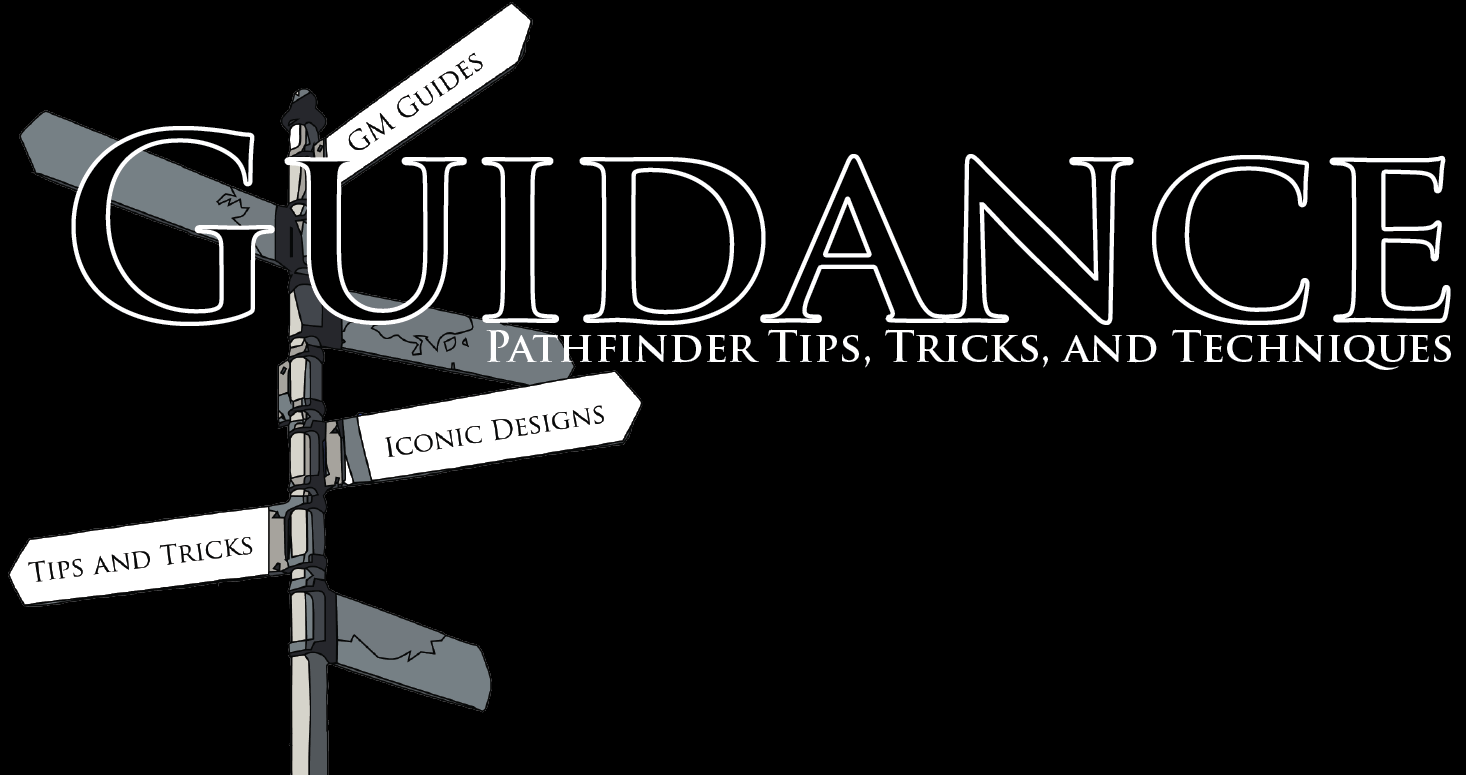
Alexander “Alex” Augunas has been playing roleplaying games since 2007, which isn’t nearly as long as 90% of his colleagues. Alexander is an active freelancer for the Pathfinder Roleplaying Game and is best known as the author of the Pact Magic Unbound series by Radiance House. Alex is the owner of Everyman Gaming, LLC and is often stylized as the Everyman Gamer in honor of Guidance’s original home. Alex also cohosts the Private Sanctuary Podcast, along with fellow blogger Anthony Li, and you can follow their exploits on Facebook in the 3.5 Private Sanctuary Group, or on Alex’s Twitter, @AlJAug.


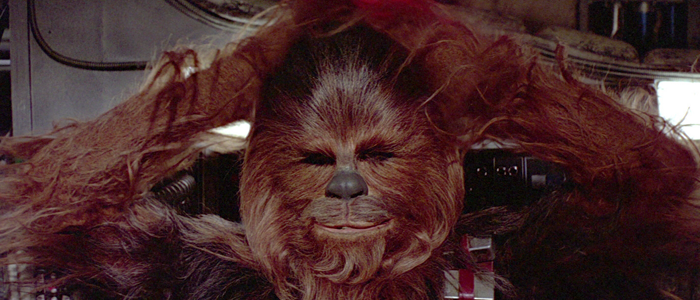




I just want to tell you that the Kitsune entry in the Dynasty Races Compendium is probably the most important article I’ve ever read that formed my opinion about more exotic races, and is a big reason that when my son asked me to play a kitsune, I didn’t even think about saying no to them (btw. he’s playing a kitsune magus and I found your post about how to build one really helpful).
On a more general note, I have to admit that I’m a bit torn on that issue myself. Not in the sense that I make stupid assumptions about players that like to play members from that races, but in the sense that they are often too exotic for the kind of games I prefer to run. It’s kind of a weakness I still have to work on after all these years, that I have a nearly visceral gut reaction when I get confronted with this kind of stuff; for example It took me some years to come to like 4E’s Dragonborn, and I still remember that the very first time I heard about them, I immediately KNEW that I never wanted to have something to with that system (and it’s funny that in the meantime I’ve come to appreciate an awful lot about 4E but it’s still that one system I’d never participate in a game).
A lot of that has to do with what you said about “lazy” designers. Short descriptions of a race just don’t do it for me, I need more, especially when I have nothing to fall back on. It’s kinda like with monsters. I love bestiaries and monster books, but the monsters I love most are those that have extensive write-ups like ecology-style articles. Which again, made me really fall in love with the DRC.
But as said, it’s also that anthropomorphic races don’t really fit in the games I prefer to play or run. Those are games that are centered around humans and even in kitchen-sink settings like the Realms or Golarion I actually prefer to focus on the stuff that is based on the human race. So when I offer to run a game in such a setting and immediately players start to throw around their ideas for a character that is not human, I start to get annoyed a bit. And for some reason, knowing that those characters often turn out to be an awesome contribution to the game doesn’t help very much against that initial feeling.
But again, the DRC proved to be a really powerful remedy for that. So I’m kinda getting better. Within reason.
It’s great to hear that you got so much use out of the Dynastic Races Compendium! I poured about a month to two months of research into different facets of each race’s real-world mythology to make it work, so it’s good to know that people are getting use out of my blood, sweat, and tears.
I personally think that the exotic “problem” is definitely something that’s remediable, but persists nevertheless. I find its especially common among GMs who’ve had a well-crafted homebrew setting that they simply don’t want to see tarnished by new additions, and I think that’s understandable. I feel like I should do a blog on that topic because I have some pretty great anecdotes to help with that. Maybe after the horror blog. In any case, it’s good to hear that you’re opening the flood gates! It can be VERY tough for a GM to do that, regardless of experience level. (New GMs often think that letting weird stuff into their game is a mistake, like they’re going to play the game wrong, while older GMs often have a vision in their heads that they’ve spent years perfecting and they don’t want to compromise it with something weird, and anthropomorphic animal races are 100% divisive in implementation.)
On lazy designers, definitely. You can’t just have a small one-paragraph tidbit of information on a species that you’re allowing players to play as. It’s irresponsible.
Interestingly enough, the one sentence that had the most influence on my views regarding settings is the one in the introduction to Eberron: If it exists in D&D, it has a place in Eberron. That’s what I’m going for with the campaign setting I’ve been working on for quite some time already.
The caveat being that I want the elements I introduce into the setting to actually make sense within its context. That can be a real challenge but it can also be a lot of fun. So yes, I would appreciate a blog entry about that topic very much. 🙂
Any ideas on what, specifically, you’d like me to write about in this regard?
I myself and the players I game with usually prefer core races with a strong preference for humans. The extra feat for humans is often the final decision factor. But, a lot of players want to play something exotic but only for some benefit the race provides. Aasimar and tieflings have a lot of perks, for example. The downfall is the players then play the exotic race PC with a human personality. Elves for example are tough to play in my mind. They have a long life-span that would (to me) create an air of ‘time will take care of the problem’. Pesky human giving you fits? Ignore him for forty years and he’s no longer a problem. Basically, time and again, I see players with potentially very fun and unique race choices but don’t give it the dedication it requires to maintain that unique racial perspective, mannerisms, outlook on life, attitudes, etc. It’s less effort to play a human as we all know how to do that.
I would love to play a catfolk sometime in the future. I would have so much fun with stereotypes it would be ridiculous. *coughs up a hairball*
I totally agree with you on the Extra Feat thing. I didn’t play human in PF for a LONG time because the extra feat contributed somewhat to my OP disentigrate sorcerer build.
I disagree on the “exotic race with human personality,” bit though. I don’t think races need to be alien to feel different. Their character needs to simply be informed by their experiences as a member of the race. For example, we played a Dead Suns game today where my ratfolk (aged 14) had no problem buying cigarettes and alcohol for a pair of teenaged vesk (aged 14 – 15) despite the fact they were minors. When the rest of the party chastised me over my choice, I pointed out that they were both older then I was!
Agree with this sentiment completely. I started doing the kitsune thing myself after the Fox Clan in L5R, largely due to my interest in naginata of all things. It was my introduction to Shinto, animism and, eventually, Eastern philosophy as a whole. I always enjoyed different players of different games having their totems or themes, and the tropes for hengeyokai resonated with the type of characters I enjoy playing (playing tricks, living disguised, etc…). Kitsune themselves have such a rich history that can inspire so many different types of characters that it’s actually difficult to find race/class combinations I haven’t seen in some other fiction (not that characters should ever be limited to class/race combinations).
Ideally, roleplaying games are about different expressions of the self, using your character as your medium. Players can pour more hours into a single character than they care to admit, fleshing out backstory, personality and appearance in ways that synergize with the mechanics that help flesh out the character in the RPG medium. It is completely natural to respond with anger when someone reduces all that to any single dimension, especially a sexual fetish.
It’s a shame how little information we get about so many PC races in the campaign. Blood of the Beast was an extremely popular book, and it’s kind of a shame we get so many more “item compendiums” than we do information on obscure races. Hopefully we will see more information fleshed out in PF2 now that it’s been made clear which of the races from PF1 the playerbase wants to play.